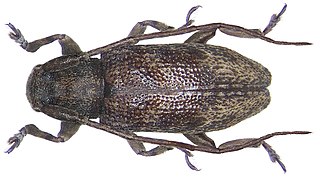American Samoa Department of Education (ASDOE) operates public schools in American Samoa, an insular area of the United States. The public primary schools of the Eastern District includes the following: Matafao Elementary, Aua Elementary, Pago Elementary, Masefau Elementary, etc. The public primary schools of the Western District includes the following: Alataua Elementary, Leone Midkiff Elementary, Pavaiai Elementary, Lupelele Elementary, Manulele Tausala Elementary, and Tafuna Elementary. On the secondary level, these schools are the 5 largest high schools in time order: Samoana High School (1946), Leone High School (1965), Fagaitua High School (1968), Nu’uli Vo-Tech High School (1982), and Tafuna High School (1982). Samoana High School is the first secondary school of the territory, and at the time it was simply called American Samoa High School. However, when other new high schools were established, it was renamed Samoana. Samoana High today is the second largest high school in terms of student population (946) and the third largest high school in terms of area. Leone High School is the first Western District High School. Faced with a shrinking student population, Leone High today ranks 3rd in terms of student population (675) and is the second largest high school in terms of area. Fagaitua High School is the first Eastern District High School. It is the 4th largest high school in terms of student enrollment (537) and the 4th largest high school in terms of area. Nu’uli Vo-Tech High School is the first trade-school in the territory. Because of this, it has the smallest student enrollment (265). It is also the smallest out of the big 5 in terms of area. Tafuna High School is the newest public high school in the territory. It has grown to have the largest student enrollment (1202) and boast the largest school size Each high school, except Nu’uli Vo-Tech, are given unique nicknames entitled to their specific color/ reputation: Samoana Sharks “Blue Empire”, Leone Lions “Lion Kingdom”, Fagaitua Vikings “Funky Town”, and Tafuna Warriors “Warrior Nation.”
Tree snail is a common name that is applied to various kinds of tropical air-breathing land snails, pulmonate gastropod mollusks that have shells, and that live in trees, in other words, are exclusively arboreal in habitat.
Samoana jackieburchi was a species of tropical, air-breathing land snail, a terrestrial, pulmonate, gastropod mollusk in the family Partulidae. This species was endemic to Tahiti, Society Islands, French Polynesia.
The short Samoan tree snail, Samoana abbreviata, is a species of tropical, air-breathing, land snail, a terrestrial, pulmonate, gastropod mollusk in the family Partulidae. This species is endemic to American Samoa.

Samoana is a genus of tropical, air-breathing, land snails, terrestrial pulmonate gastropod mollusks in the family Partulidae.

Samoana attenuata is a species of air-breathing tropical land snail, a terrestrial pulmonate gastropod mollusk in the family Partulidae. This species is endemic to French Polynesia.

Samoana conica is a species of tropical, air-breathing land snail, a terrestrial, pulmonate, gastropod mollusk in the family Partulidae. This species is endemic to American Samoa.

Samoana diaphana, one of several species also known as the Moorean viviparous tree snail or the Polynesian tree snail, is a species of tropical, air-breathing land snail, a terrestrial, pulmonate, gastropod mollusk in the family Partulidae. This species is endemic to French Polynesia.
Samoana thurstoni is a species of tropical, air-breathing land snail, a terrestrial, pulmonate, gastropod mollusk in the family Partulidae. This species is endemic to American Samoa. It is threatened by habitat loss.

Samoana fragilis is a species of tropical, air-breathing land snail, a terrestrial, pulmonate, gastropod mollusk in the family Partulidae. This species is known by the common name Fragile Tree snail and endemic to Guam and island Rota.

Samoana burchi is a species of a land snail, a terrestrial gastropod mollusk in the Partulidae family. This species is endemic to Tahiti, French Polynesia.

†Samoana inflata was a species of air-breathing land snail, a terrestrial pulmonate gastropod mollusk in the family Partulidae.
Samoana High School (SHS) is a prominent high school in Utulei, a community in Maoputasi County, Eastern District, American Samoa. It is a part of the American Samoa Department of Education.
Samoana bellula, common name the "Polynesian tree snail", is a species of tropical, air-breathing land snail, a terrestrial, pulmonate, gastropod mollusk in the family Partulidae. This species is endemic to Ua Pou, Marquesas Islands, French Polynesia.
Samoana decussatula, common name the "Polynesian tree snail", is a species of tropical, air-breathing land snail, a terrestrial, pulmonate, gastropod mollusk in the family Partulidae. This species is endemic to Hiva Oa, Marquesas Islands, French Polynesia. It has also been recorded from the neighbouring island of Tahuata, but its presence there has not been confirmed.
Samoana hamadryas, common name the "Polynesian tree snail", is a species of tropical, air-breathing land snail, a terrestrial, pulmonate, gastropod mollusc in the family Partulidae. This species is endemic to Raivavae, Austral Islands, French Polynesia.

Ropica is a genus of beetles in the family Cerambycidae, containing the following species:

Cleora samoana, the forest looper caterpillar, is a moth of the family Geometridae. It is found on Fiji, Niue, Samoa and Tonga.
Ropica formosana is a species of beetle in the family Cerambycidae. It was described by Henry Walter Bates in 1866. It contains four subspecies, Ropica formosana formosana, Ropica formosana japonica, Ropica formosana nobuoi, and Ropica formosana tokaraensis.







